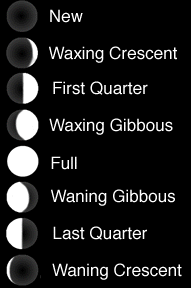The Phases of the Moon.
Click on image for full size
How Do the Phases Get Their Names?
When the Moon appears smaller than a quarter, we call it a
crescent. When the Moon appears larger than a
quarter, we call it gibbous. When the moon is getting bigger (phases
New to Full) it is waxing. When it is getting smaller (phases Full to
New) it is waning.
For example, if today the Moon were a waxing
crescent, then we would only see a little
piece of the half of the Moon that is reflecting sunlight. But
tomorrow, that piece would be bigger. If today the
Moon were a waning gibbous, then we would see a
big piece of the half of the Moon that is reflecting
sunlight. But tomorrow, that piece would be smaller.
There is an easy way to tell if a crescent Moon is growing or
shrinking. If the crescent Moon looks like a "C" (C for collapsing!),
it is shrinking.
You might also be interested in:
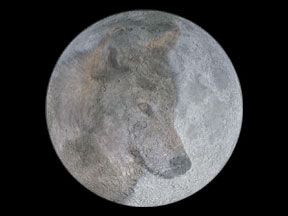
Do you know anybody who has a nickname? Did you know that the Full Moon has a bunch of nicknames? Native Americans who lived in the North and East parts of North America had many nicknames for the Full
...more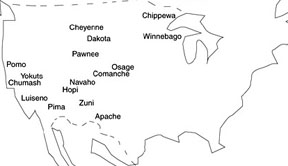
People have been living in North America for a long, long time. The first people to live there were the Native Americans. They didn't have clocks or calendars so they watched tides, the Sun, the Moon,
...more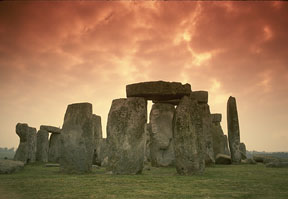
Man has always observed the sky. By watching the Sun and Moon, early man could tell what season was coming next. They had to know this to be able to farm and hunt. Archeoastronomy started in the 1960's
...more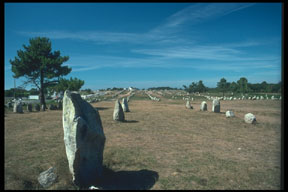
The stones of Carnac, France, are very famous because there are a lot of them and because they are so old! The oldest stones found in Carnac are from about 4,500 B.C. That's older than the stones at Stonehenge!
...more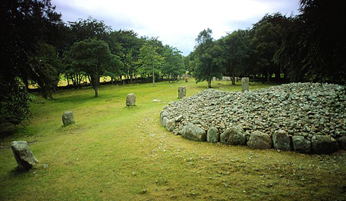
You may have heard of the lake called Loch Ness, where people think they've seen the Loch Ness monster. Near Loch Ness there are three giant stone tombs you may not have heard of...they are called the
...more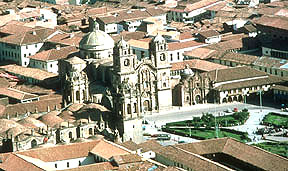
Cuzco is a city in Peru. It was the capital of the ancient Inca Empire. In ancient times, Cuzco was the center of the Inca road network which was made up of about 40,000 kilometers (25,000 miles) of roads
...more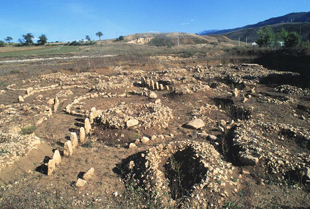
The stone rings and tombs of England and France are very famous. But, there are also stone structures in Italy. There are some neat stones in Fossa, Italy. They are standing stones. These stones form circles
...more


